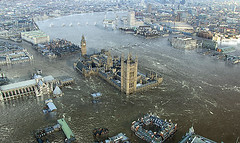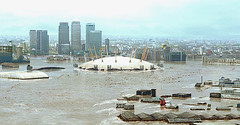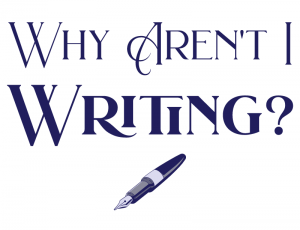Kevin and I went to see San Andreas last Sunday, a film that I nearly missed because I was in the UK whilst it was running at our local cinema, but which I was so eager to see that I made Kevin drive for an hour so we could catch the closest showing we could find.
As a lapsed geologist, I love anything even remotely geological, and particularly if it involves geophysical hazards such as earthquakes, volcanoes, landslides, or tsunamis. San Andreas thankfully only has two of those and, although I knew its pudding was over-egged, I was still really looking forward to seeing just how scientifically silly it was. I’d read the geological reviews, and was expecting it to be incredibly silly indeed.
I was not disappointed. The majority of the plot, from a scientific standpoint, is ridiculous, although there are a few points which are either plausible or spot on.
SPOILER ALERT. DO NOT READ ON IF YOU DO NOT LIKE SPOILERS, BECAUSE THIS HAS ALL THE SPOILERS IN THE WORLD FOR SAN ANDREAS, AND SOME FOR MAD MAX: FURY ROAD.
I’m not going to get in to a long description of what’s realistic and what’s not, as otherwise we’ll be here all day and others have done it better than I could. Suffice it to say that a Nevada quake could trigger a rupture on the San Andreas fault, but not at that magnitude. The constant aftershocks are a good representation of reality, but the collapsing skyscrapers are not. The advice to ‘drop, cover, and hold on’ is indeed what you should do in an earthquake: Get to the floor, get under something solid, maybe a desk or table, and hold on to it. And whilst drawback is a good way to spot that you’re in deep tsunami schtum, the San Andreas fault cannot produce a tsunami because the two sides are sliding past each other horizontally, not vertically as in a subduction zone. Oh, and in real life, if you’re dead for five minutes after drowning without receiving expert medical care, you’re probably just dead full stop.
The scientific accuracy of the movie was about what I was expecting. What really surprised me was the stealth feminism and the strong parallels with Mad Max: Fury Road.
Yes, you read that right. Feminism. In a movie featuring The Rock. I’m not kidding.
Now the first thing that I want to say is that I entirely disagree with the premise that only women can make feminist art, or that the only feminist art worth making is perfectly feminist art. A movie does not have to be perfect to be good, it does not have to score 100 percent on some feminist purism scale to be worthy of note. So before anyone argues that there’s something unfeminist in the movie which entirely negates my argument, let’s just lay it out: I’m not arguing that this is a perfect feminist movie, I’m saying that it has some laudable feminist aspects which I would like to see a lot more of in other movies (and books and TV and and and).
Right, I’m glad we’ve got that out of the way.
The first item of note in San Andreas is that it is in many ways a predictable action hero movie. It involves Dwayne ‘The Rock’ Johnson staring as Ray, a big manly man with big manly muscles and a big manly career rescuing poor young ladies who’ve ended up stuck in their car after a landslide (and their own lack of attention — tsk, lady drivers) runs them off the road. The main plot of the movie concerns how Ray, a Los Angeles Fire Department Air Rescue pilot, flies his chopper through the disintegrating skyscrapers of LA to rescue his soon-to-be ex-wife, Emma, (who has left him for a one percenter architect, Daniel), and then continues on to San Francisco to rescue their daughter, Blake.
Ray is rather uncomplicated, one-dimensional character, played perfectly by Johnson whom the uncharitable might say specialises in uncomplicated, one-dimensional characters. Ray is a stereotype, and he cleaves to all the action hero tropes: He is big and brave. He has trouble expressing his emotions and loses his wife because of his inability to open up. He rescues people. He redeems the failure in his past, in this case the inability to save his daughter Mallory from drowning by, surprise surprise, saving his daughter Blake from drowning.
And, of course, he heals the rift between himself and his wife, winning back her love through the expediency of having a handy catastrophe of monumental proportions to help him work through his feelings. Never mind the several million people who die, the key thing is that Ray and Emma rekindle their love. So far so tropey.
But what about Emma? Well, we don’t get to see much of Emma. We know that she’s got a pretty shoddy taste in men as you suspect that Daniel, the rich architect dude, is a wanker from the off, and it doesn’t take long for him to confirm that not only is he a wanker, he’s a murderous wanker when his own life is at stake. Where Ray is one dimensional, Daniel is merely a MacGuffin, and the way is clear for him to get knocked off so that Emma can go back to Ray without any emotional complications.
How much more interesting and emotional would it have been for Daniel to have turned out to actually be a lovely, honourable chap, for Emma to have to choose not between dead wanker and live hero, but live hero and live hero? That’s probably a bridge too far for an action movie, but still.
We see that Emma’s good at following instructions, and she certainly manages to go up when everyone else is going down, but apart from that she doesn’t really do very much. However, she doesn’t scream unnecessarily, isn’t ditzy or stupid, appears to hold her own in terms of bravery, so she gets ten out of ten for defying usual action movie wife tropes, but she’s given very little to actually do. She just gets rescued, travels with Ray to San Francisco, and pilots a boat a bit at the end, but other than that, nada really.
So rather like Mad Max: Fury Road is just a very long car chase with a brief lull in the middle, San Andreas is a very long road trip, except it’s mostly by air. And rather like Max, Ray’s story is so simple it almost doesn’t exist. Max helps Furiosa save the Wives, but he is almost always the adjunct, having a grand total of one novel idea —‘Let’s turn round and go back again’ — throughout the entire movie. Ray manages to be a bit more useful, he saves five people throughout the entire movie, but he spends most of his time getting from A to B and dealing with all these sudden feelings he’s having. But his actions do not drive the story forward. He is a reactive character, who spends most of his time dealing with things that are happening to him, making few decisions and none that are surprising.
On the other hand Ray and Emma’s daughter, Blake, gets an awful lot to do. More than any other single character in the movie, it’s Blake who has to think on her feet, come up with ingenious solutions, defy (absent) authority, and put her extensive knowledge of emergency preparedness to the test. And she does this whilst assisting and protecting two male characters, newbie architect Ben and his little brother Ollie.
Blake is incredibly interesting. At the beginning of the movie, it rather seems as if she’s the usual sort of young women that we see in action flicks: She’s sitting by a pool, chatting to her dad on the phone, getting him to do something for her. She’s uncomfortable with her mum’s choice of new boyfriend, but feels some degree of loyalty to her mum and acquiesces to Daniel’s offer to take her up to San Francisco on his private jet.
When the earthquake hits, she and Daniel are in their chauffeur-driven car in the underground garage of his offices when a chunk of masonry kills said chauffeur and trips her legs, so she cannot get out of the car. At this point, I thought we were going to go full stereotype and we’d have screaming woman and slimy Daniel would save her and then we’d watch their flight through the disaster, but no, he’s more interested in saving himself, leaving her there to be Female Helpless Victim.
And sure enough Ben turns up to save her, with his younger brother Ollie in tow. Unable to shift the concrete by hand, Ben uses the car’s jack to lift it up a bit, then lets down the car’s tyres to give Blake just enough room to extricate herself. Nice bit of lateral thinking there, but so far, again, so tropey.
But Blake, it turns out, is not just a capable young women, she is intelligent, resourceful, determined, brave, and well-informed. She’s paid attention to Ray over the years, and knows what to do in an emergency and how to do it. It is Blake, not Ben, who leads the trio ultimately to safety (via her own death, but I’ll come to that later). It is Blake who makes the decisions, and Ben and Ollie who either provide information or support to her. Indeed, when Ben is vacillating over whether to follow her instructions, it is Ollie who says, (paraphrasing), “But Blake’s the one who knows what she’s doing, and she’s saved our arses already, so without her we’re toast.”
Indeed, Blake, Ben and Ollie work well together as a team, with Blake as the clear leader. Blake is the one who knows they need to find a landline to call her parents. Ollie’s the one with the map who directs them to the nearest electronics shop, but Blake’s the one who cobbles together a handset and makes it work.
Although Blake takes Ray’s instructions on where to meet, when Coit Tower turns out to be inaccessible, she’s the one who decides where to go next: to higher ground and Ollie, again, is the one with the map but Blake is the one who knows, when they see an abandoned fire truck that there might be useful supplies. She knows which channel to tune the radio set to.
When Ben is struck by flying glass, Blake shows no squeamishness at all in removing the glass from his leg. There’s no squealing, crying, shouting, screaming or fainting. She does what needs to be done. And when they hear the tsunami warning, she is the one who knows to get up as high as possible, and when they think they’re high enough, she’s the one who gives commands to find water and supplies. She is calm, collected, rational, knowledgeable and very much in command.
Yet there’s no arguments from Ben and Ollie about Blake’s leadership position, other than Ben’s one moment of doubt which is quickly and effectively countered by his younger brother. There’s no stroppiness about being told what to do by a woman, no snark, no sarcasm, no disobedience, no backstabbing, no self-interest. They just get on with it, each doing their best to help each other survive, working together as a team in which each brings their strengths and each can rely on the other.
That depiction of teamwork alone is unusual in a disaster movie. So often we’re given teams in conflict, where one person is working against the others because they are selfish, stupid, greedy or venal. But in San Andreas, everyone except Daniel is likeable, and Daniel is the cartoon sacrificial jerk who has to die. Everyone else gets on with doing what they think they need to do not just to survive, but to save each other.
Mad Max: Fury Road was really Furiosa’s story. She’s the interesting one; she drives the movie forwards; and she takes control of the situation, except when she realises that someone else might do it better.
San Andreas is really Blake’s story. She’s the interesting one; she drives the movie forwards; and she takes control of the situation, except when she’s either physically pinioned inside a car or dead. She makes the decisions; she shows the initiative; and she is the knowledgeable one, the leader.
And, interestingly, Blake takes on this role without surrendering her femininity or character. Furiosa, and similar characters like Aliens’ Ripley, are portrayed as having had to become harder, harsher, colder less empathic, in order to survive. They sacrificed their femininity on the altar of survival and that sacrifice was made off screen, before we even meet them.
Blake, on the other hand, starts the movie as a typical young woman and whilst by the end of the movie she’s been through a lot, what she hasn’t done is shed her femininity as if it were a skin to be sloughed to reveal the ‘real’, more masculine Blake underneath. She’s clearly still herself, clearly still has all the emotional capacities that she had when she started. She hasn’t had to harden, to close off her emotions or reject her humanity, even though she’s seen death and disaster up close.
One area where the script does fail us is in the insistence that Blake has to die in order for Ray to redeem himself. Simply saving her from certain death is not enough, she has to actually die in order for Ray to forgive himself for the death of Mallory, whom we’re told no one could have saved. This is not on. Using the suffering and death of woman as a mechanism to redeem a man reduces that woman to a convenient object. In doing that, San Andreas fails its audience, Blake and Ray himself, who is shown as incapable of dealing with his feelings and making peace with his past without the actual death of his daughter. That’s ugly, no matter which way you cut it.
Blake is, for my money, the most important character in San Andreas from both cultural and feminist points of view. Blake shows us that women can be smart, knowledgable leaders without being ball-breaking bitches. Indeed, they can be strong leaders and be kind, compassionate and caring at the same time. Blake shows us that women can give orders to men without those men breaking down in to faux-masculine outrage, and that women can work hand-in-hand with men to ensure everyone’s success and survival.
Ben, of course, has a part to play in this construction too. He is clearly also smart, resourceful and brave. He has to be, in order to be worthy of Blake’s love. But his reactions to to Blake’s leadership are intelligent and respectful, and they allow Blake to do what she does best.
Interestingly, Ben is British. I wonder if Hollywood thought that a woman telling an American man what to do was too outré for their audience to tolerate, but that British men are far too wimpy for anyone to complain? Well, I’m actually rather proud of the idea that British men are more capable of working closely and successfully with women leaders. I don’t know if that idea reflects reality, mind you, but I think it’s something good to aspire to.
But Blake is important not just because of what she represents, but because of who is most likely to go and see San Andreas. There’s no doubt that action hero movies are written to appeal to men, and sure enough, there were a lot of men in the cinema when we went to see it. And whilst it is incredibly important that girls women see on screen female characters that they can relate to and admire, it is also important that boys and men see smart, resourceful female leaders being treated with respect. And it’s even better if that role model is slipped under their nose almost without them noticing, without engendering a Fury Road-like backlash, so that it’s just normal, unremarkable, like Furiosa’s disability was.
San Andreas is only one film, and it’s far from being a perfect film, but it’s a good, solid step towards normalising the idea that women can be strong, compassionate and successful leaders. More please.
{ Comments on this entry are closed }








